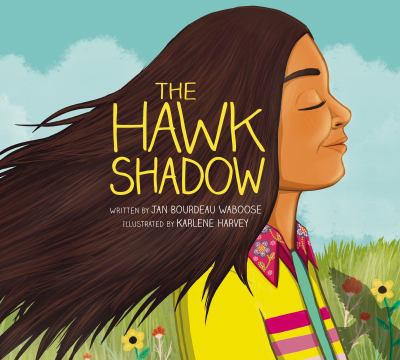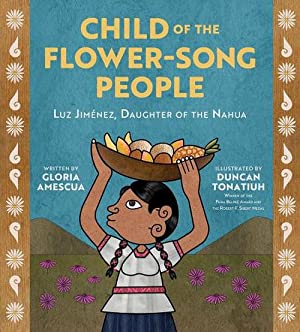
written by Jan Bordeau Caboose and illustrated by Karlene Harvey
Serenity accompanies her brother, Big Ed, on a fishing trip to the Hawk River. As they walk, the siblings chat and tease each other and Big Ed explains the significance of the river’s name. It is named for the the Hawks, Gekek, Keepers of the River and their Protectors. Big Ed and Serenity arrive at the edge of the river and cast their lines, his from a beautiful new fishing pole and hers from a spruce branch made by their father. Serenity is daydreaming as she fishes when a Red Tailed Hawk (Gekek) suddenly appears, swooping over her and screaming, before flying off over the river. Serenity looks around and her brother is no longer there. Gekek, the Red-Tailed Hawk, returns, screams and flies up the river again. Serenity follows and finds her brother, his foot caught between rocks in the river. She doesn’t know what to do until Gekek swoops down over her pole. Serenity holds the pole out to Big Ed and he grabs hold. Together, they work to return him to safety on the river bank. They lay on the river bank for a few moments before heading back home, thankful for the protection of the Spirit guides.
This lively story is wonderful for many reasons. We are given a glimpse of the culture and lives of the Anishinaabe people, an exciting rescue and the loving relationship of a brother and his younger sister. All of this is set in a picture book with vibrantly colored illustrations that transport the reader to the trails and river banks of the Hawk River. Highly Recommended.

